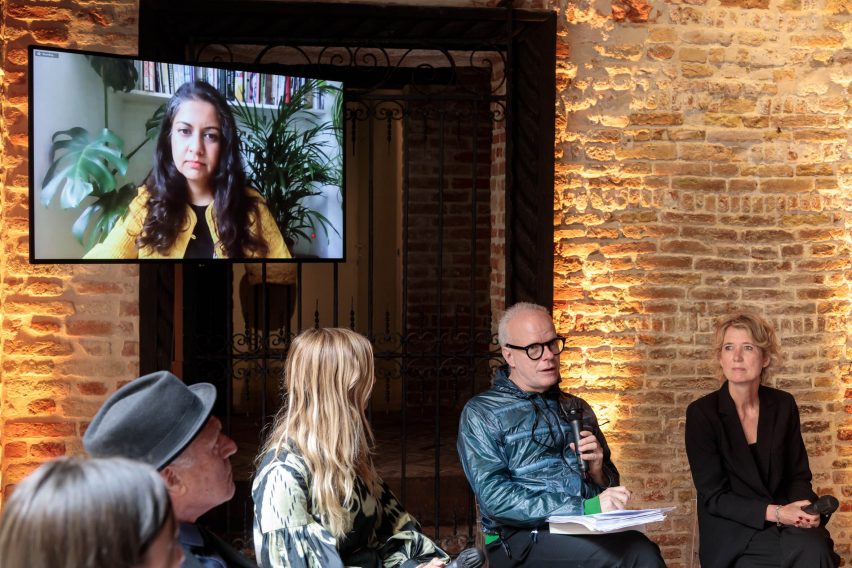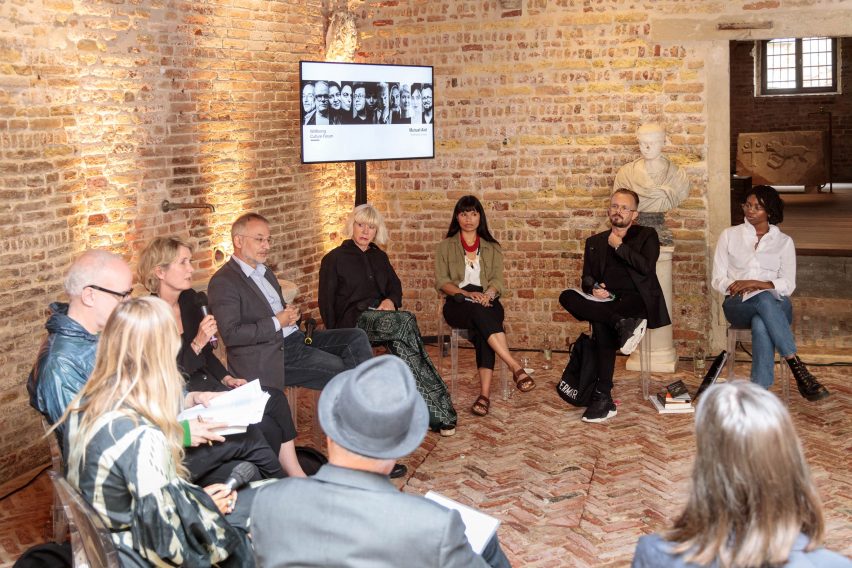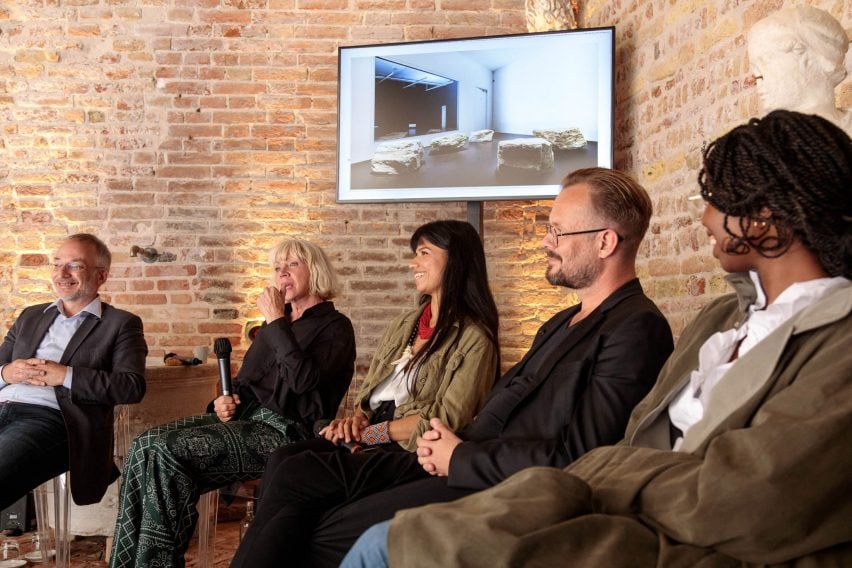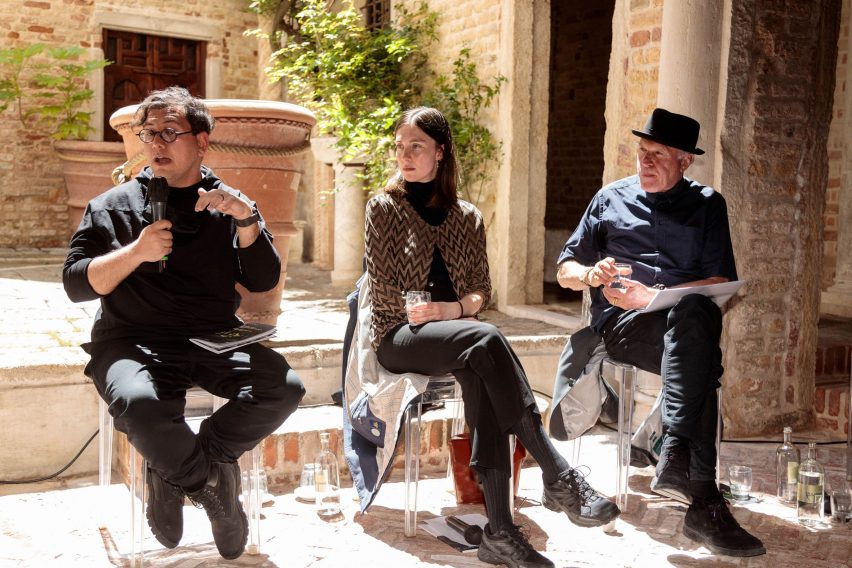Therme Art's Venice panel discussion explores how creatives can be environmental activists
Dezeen promotion: Maja Hoffman, Sissel Tolaas and Joseph Grima were some of the creative minds who gathered in Venice last month to take part in a two-part panel discussion hosted by Therme Art.
Held during the Venice Architecture Biennale, the discussions took place as part of Therme Art's Wellbeing Culture Forum – a programme that explores the role of culture, art, design and architecture in promoting health and wellbeing in urban populations.
They brought together experts from the fields of architecture, activism, art and design and science to answer this year's biennale's over-arching question: How will we live together?

The discussion was split into two parts, called Mutual Aid and Resurrecting the Sublime – both names taken from exhibitions held during the biennale – and co-moderated by Therme Art's CEO and curator Mikolaj Sekutowicz and the artistic director of the Serpentine Galleries Hans Ulrich Obrist.
Botanist Stefano Manusco kicked off the discussion by stressing the urgent need for humans to rekindle a more symbiotic relationship with the natural world.
"Just two per cent of the surface of the earth is covered by towns," he told the audience.
"From this two per cent comes 80 per cent of the CO2, 80 per cent of the waste and it consumes 80 per cent of the resources of the world. So it's clear that if we want to solve the environmental problems we need to work on the towns."

"This is about a change of perspective," said Manusco. "We often think about protecting forests, which is, of course, something we have to do but to solve the environmental problems we have to change the idea of the town."
"How can we stop all of this carbon dioxide? By using trees," he continued. "Trees are the only thing on the planet that can take CO2 from the atmosphere and put it into the wood and onto the soil. This is the solution, we have the data, we know we have to plant 1,000 billion trees, which is not so much – we have space, we have the money, and this would change everything."
Demonstrating how scientists and designers are working to create more sustainable building solutions, art patron Maja Hoffmann, then talked of how new materials made from salt, sunflowers and algae developed at the Luma Foundation in Arles have been applied to the interior of the creative hub's new stainless-steel tower designed by Frank Gehry.

Nina Gualinga, environmentalist and indigenous rights defender, explained how society can learn from the indigenous people around the world, who have been living in balance with nature for centuries.
"Indigenous people make up four per cent of the world's population but protect more than 80 per cent of the world's remaining biodiversity," she said.

"A lot of climate change and the issues that we are facing today come from, to some degree, colonisation," she continued. "It comes from the displacement of local people living there. [companies and governments] grabbing that land, taking it, exploiting it, taking out the fossil fuels from the ground."
"We have to look for answers from the people that don't only protect the land biodiversity and forests but are also the first ones impacted and most impacted by this system. It happened in my community but it happens all over the world."
The second half of the talk, took its name – Resurrecting the sublime – from an installation put together by Sissel Tolaas, Christina Agapakis, and Ginsberg. The project saw the team recreate the lost scents of extinct flower specimens collected from Harvard University's Herbaria library.
The Mutual Aid took place at the Venice Architecture Biennale
The installation asked what other regenerative actions could be elicited in the revitalisation of our natural ecosystems and how we can use biotechnology and art as a tool to deepen empathy and our responsibility to the planet.
Other participants in the talks included architect Grima; media artist and designer Refik Anadol; artist Not Vital; cultural historian Salome Rodeck; Anab Jain, designer, futurist, filmmaker, educator and co-founder of Superflux; Marianne Krogh, art historian and curator of the Danish Pavilion; Hala Wardé, architect, designer and curator of the Lebanese pavilion.
The talk was the latest in Therme Art's Wellbeing Culture Forum talk series. Therme Art is the creative arm of the Therme Group and commissioning art and architecture to its spa baths and resorts around the world.
Partnership content
This article was written by Dezeen for Therme Art as part of a partnership. Find out more about Dezeen partnership content here.